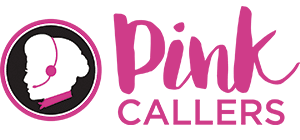Having graduated from college for graphic design – we spent a lot of time on the ‘color wheel’, utilizing opposites in design and marketing, and basically how to pick great colors that wouldn’t clash.
- You may think that because color relates to art that it’s not a science.
- Some articles on Using the color wheel may not give you quick actionable tips you can use right away.
- Lastly, we’re going to give you 3 color wheel mistakes to avoid at all costs.

Understanding the Color Wheel for Marketing
Look at the color wheel chart to discern between primary, secondary, and tertiary colors. Primary colors consist of red, blue, and yellow.
They’re pure, meaning they can’t be generated from other hues, and all other colors derive from them.
Positioned between the primary colors on the wheel are secondary colors: orange, green, and violet.
These hues are the product of blending equal parts of two primary colors. Tertiary colors emerge from mixing a primary hue with its adjacent secondary color. With each fusion (primary to primary, then primary to secondary), the resultant shades become less vibrant. (But why does this all matter for marketing?! Read on!)
Color Wheel Glossary for Marketers
- Analogous: Adjacent colors on the wheel.
- Chroma: A color’s vibrancy or subtleness.
- Complementary: Contrasting colors on the wheel, which appear more vibrant when paired.
- Neutral: Black, white, brown, and gray.
- Secondary: Equal blends of two primary colors.
- Shade: Any color darkened with black.
- Primary: Fundamental colors that form all others on the wheel.
- Split Complementary: A color paired with two shades analogous to its complementary hue.
- Triad: Three evenly spaced colors on the wheel.

Remember, the color wheel is a guide. Trust your instincts and consider your brand identity when selecting colors for your marketing endeavors.
Balance Warmer and Cooler Colors for Contrast
Colors are deemed warm or cool through association: reds, oranges, and yellows are warm, whereas blues, greens, and violets are cool. For a balanced design, blend warm and cool colors, letting one dominate while introducing elements of contrast
Warmer Colors in the Color Wheel (for marketing):
Enlivening and bright – warmer colors like reds, oranges, and yellows can elicit energy, alert your viewers or just ‘warm them up’ with comfort, depending on how you use these colors. The point is – utilizing warmer colors on the color wheel should be done intentionally and not without a cooler color offset, unless you have a strong reason to push on warm notes.
Cooler Colors in the Color Wheel (for marketing):
Moody and refreshing, blue is the most likely to be someones favorite color, and green is associated with nature, health, and cleanliness. But your task is to find a way to keep these colors feeling fresh, and not dry. Don’t use the basics, instead – go off the beaten path a little bit to choose a blue, green or other cool color that is lesser used, than the basic ‘blue’ hex code, or simple blue’s and greens.

Watch out colors elicit emotional reactions and set a tone
As you craft marketing color schemes for marketing inspired by the wheel, note that colors can elicit emotional reactions and set a tone. Greens can relax viewers, yellows evoke energy, and blues are often soothing. .
How to Use The Color Wheel in Marketing

Analagous, Monochromatic, Triadic, and Complementary Color Schemes
Monochromatic color schemes for luxury marketing
Monochromatic schemes utilize different shades (with the addition of black) and tints (with the addition of white) of a single color, resulting in a muted palette. An advertisement dominated by one hue is best used for dramatic or luxury type products. For most marketing materials, varying shades and textures can make this scheme more engaging. For instance, a website might predominantly use a deep blue but introduce variations with lighter blues for buttons and darker blues for headers.

“A monochrome color combination is a different variation of a single hue. This combination consists of varying tints, shades, and tones of the chosen hue. For example: dark blue, slightly lighter blue, and light blue. These combinations are great for simplifying busy designs and creating a harmonious, visually appealing look.
Monochrome is a great color scheme strategy if you want your brand to be identified with a particular color. It’s also useful to show progression in a design, such as a tiered price list, or to create a more sophisticated-looking design using a brighter color.” – Oberloo
Analogous Color Schemes for a cohesive, coordinated feeling
This strategy provides a bit more variance by employing colors situated adjacently on the wheel. Because they possess the same foundational colors, neighboring shades cooperate harmoniously. Select one color as the dominant shade in your marketing material, and pick one to three others as accent colors. A brochure might utilize an analogous scheme of teal, blue, and purple, with blue being the primary hue, supported by hints of teal and purple.

Complementary colors come off as vibrant, joyful, or bright in marketing
Complementary colors, located opposite each other on the wheel, inject vitality into any campaign. They balance each other visually, making them great for highlighting contrasts. A logo design, for instance, might feature a bright orange symbol against a deep blue backdrop.

Triadic color schemes give an energetic and dynamic vibe to marketing and design
Triadic schemes are bold, using three colors equidistant on the wheel. Perfect for creating a dynamic and lively feel, they’re ideal for attention-grabbing campaigns. A poster might use energetic shades of turquoise, magenta, and gold.
3 Color Wheel Combination mistakes to avoid at all costs
When working with the color wheel, there are certain combinations and approaches that can lead to jarring or unpleasant results. Here are three color wheel combination mistakes to avoid:
-
Overwhelming Use of Complementary Colors: While complementary colors (those opposite each other on the color wheel, such as blue and orange) can create a vibrant look when used in balance, overuse or oversaturation of both colors can lead to visual tension and discomfort. This intense contrast can strain the eyes, especially if both colors are used in their purest and most vivid forms without any neutralizing or intermediate shades.
-
Ignoring Value and Saturation: Even if you choose harmonious colors based on the wheel, if you don’t consider their value (lightness or darkness) and saturation (intensity), the combination can look off. For instance, pairing a very pale, desaturated blue with an intensely saturated, dark violet might lead to imbalance in the composition. It’s essential to ensure that the colors’ values and saturations harmonize, especially in designs where cohesiveness is critical.
-
Overcomplicating with Too Many Colors: Just because the color wheel has a myriad of shades doesn’t mean they should all be used at once. Introducing too many colors, especially if they don’t follow a specific scheme (like triadic, analogous, or complementary), can create visual chaos and confusion. It can also dilute branding or messaging in marketing materials. A more restrained palette, chosen thoughtfully, can communicate effectively and please the eye.
Remember, while the color wheel provides guidance, context, and personal preference play substantial roles in determining the success of a color combination. Always consider the purpose of the design and the target audience’s perception when selecting colors.















